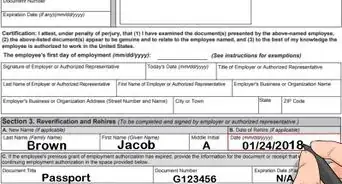This article was written by Jennifer Mueller, JD. Jennifer Mueller is an in-house legal expert at wikiHow. Jennifer reviews, fact-checks, and evaluates wikiHow's legal content to ensure thoroughness and accuracy. She received her JD from Indiana University Maurer School of Law in 2006.
There are 11 references cited in this article, which can be found at the bottom of the page.
This article has been viewed 17,643 times.
Under California law, most employees are considered "at-will" employees. Either the employee or the employer can end the employment relationship for nearly any reason, or for no reason at all. However, employers cannot terminate an employee for an illegal reason, including race, gender, disability, sexual orientation, or religious discrimination. An employer also cannot fire an employee in retaliation because the employee reported illegal conduct on the part of the employer. If your employer fires you for an illegal reason, you may be able to sue them for wrongful termination.
Steps
Documenting Your Case
-
1Organize your documents and records related to your employment. If you want to sue your former employer for wrongful termination, you have to be able to prove they fired you for an illegal reason. This can be very hard to prove, because discriminatory or retaliatory employers typically don't leave a paper trail of their motivations.
- Documents related to your employment may help establish motive. For example, if you recently requested time off for surgery and your boss fired you as soon as they learned about your request, you may be able to infer that they fired you because you requested time off. Since time off from work for a medical reason is your right under federal law, that situation might constitute wrongful termination.
- A copy of any employee handbook provided by your employer can also help. For example, your employer may have an established termination procedure outlined in the handbook. If you weren't fired using that procedure, your employer may have had an illegal motivation.
-
2Consult an attorney. Wrongful termination cases are extremely complex, and you only have a limited period of time to file your claim. An experienced employment attorney can help you navigate the law and advise you on how best to proceed.
- Employment attorneys who specialize in wrongful termination typically provide a free initial consultation. You can use that opportunity to interview several attorneys until you find the right one for you.
- Most employment attorneys also are willing to take wrongful termination cases on contingency, which means you won't have to pay any attorney's fees up front and won't pay any at all unless you win or settle your case.
Advertisement -
3Request your employee file from your former employer. Especially if you parted on bad terms, your former employer may be reluctant to hand over your complete employee file. However, your employee file can provide clues as to your employer's motivation, if you can get ahold of it.
- For example, your employer may have claimed you were fired because you were late to work too many times. However, your employee file would show the exact number of times you were late, and whether any of those times were excused.
- If you're still on good terms with someone in human resources, you may be able to go through them to get a copy of your file. If your employer wasn't large enough to have a separate human resources department, you may have a little more difficulty.
-
4Talk to co-workers. If you believe your former employer fired you for a discriminatory reason, there may be a larger pattern of discrimination that is evident in the workplace. If you're still on good terms with any of your former co-workers, you can talk to them about whether they've noticed anything.[1]
- If you have direct evidence of discrimination, such as if your boss made discriminatory comments to you, think about whether anyone else witnessed those remarks. If other employees were around, ask them if they'd be willing to testify to what they heard or saw.
-
5Create a chronological outline. In most cases, termination doesn't happen out of the blue. Any incidents or behavior that you noticed leading up to the termination may provide clues as to your employer's true motivation for firing you.[2]
- For example, suppose you reported your employer for health and safety violations. Thereafter, your immediate supervisor began distancing themselves from you. Then, you were written up for minor violations to the code of conduct that other employees consistently get away with. Ultimately, you were fired. That pattern might demonstrate evidence that you were wrongfully terminated in retaliation for your report.
Filing an Administrative Complaint
-
1Complete an intake form. Instead of filing a lawsuit in court, you can file an administrative complaint with the California Department of Fair Employment and Housing (DFEH). To begin this process, you must submit an intake form within a year after your termination.[3]
- You can start the complaint process online by visiting https://www.dfeh.ca.gov/ and clicking the button that says "File a Complaint."
- Your form must include information about you, your former employment, and your termination, including the reasons you believe that termination was illegal.
-
2Talk to an investigator. If the DFEH decides that you have sufficient evidence that your termination might have been illegal, an investigator will contact you within 60 days. The investigator will ask questions about your termination.[4]
- If you have any documents or other evidence, the investigator may want to see them. Provide copies, but don't give the investigator any original documents. You may not get them back.
-
3Sign your complaint form. Based on the information you provide to the investigator, they will draft a complaint for you to sign. The investigator will go over the complaint before you sign it to make sure that you understand it, and it is an accurate reflection of your situation.[5]
- Once you sign the complaint, it will be sent to your former employer for a response. You'll be given a copy for your records.
-
4Review your former employer's answer. Once your former employer is served with your complaint, they have 30 days to respond. When the DFEH receives that response, you'll meet with the investigator to discuss it.[6]
- The investigator will provide you with a copy of the response as well as any documents your former employer sent to support their arguments.
- The investigator may meet with your former employer, or request documents related to your employer. The investigator will then let you know what your next steps should be.
-
5Participate in voluntary mediation. The DFEH encourages employers and employees to work out a voluntary resolution to any disputes, and provides free mediation to assist you in reaching that resolution. With mediation, you negotiate with your former employer through a neutral third-party mediator.[7]
- The mediator's job is to identify issues of contention and help you and your former employer find a good compromise that works for both of you.
- If you are unable to resolve the dispute through mediation, the DFEH may file a lawsuit in court on your behalf.
Suing in Court
-
1Request a "right to sue" notice from the DFEH. If you filed an administrative claim and mediation was unsuccessful, you can sue your former employer in state court. However, you must first get a "right to sue" notice from the DFEH. The DFEH has a form you can fill out to request this notice.[8]
- You can fill out a copy of the form online. To do so, you must open a free account with the Cal Civil Rights System (CCRS).
- If you want to fill out a paper copy of the form, you can download it from the DFEH website. Once you've completed it, mail it to Department of Fair Employment & Housing, Right to Sue, 2218 Kausen Drive, Suite 100, Elk Grove, CA 95758.
- You may have the option to skip the administrative claim process and go straight to court. If you choose to go this route, you still need a "right to sue" notice from the DFEH.
-
2Hire an attorney. Because it is extremely difficult to prove cases of wrongful termination, it is next to impossible to succeed as an employee without an attorney on your side. Your former employer will likely have a team of attorneys fighting for them.[9]
- If you haven't already, interview several employment attorneys to find the one you think would best represent you and your interests.
- Your local bar association typically has a lawyer's referral service that can help match you with a licensed attorney who is experienced in filing cases like yours.
-
3File a complaint in the appropriate court. You start a lawsuit by filing a complaint, which sets forth your allegations against your employer and the monetary or other damages you are seeking as a result of those actions.[10]
- When you file a complaint, you don't have to provide any evidence yet. Your attorney will go over the complaint with you to make sure it is an accurate reflection of your termination and your employer's motivation for terminating you.
- Your attorney will give you a copy of your filed complaint. Keep it in a safe place along with the rest of your documents related to your wrongful termination claim.
-
4Have your former employer served. After your complaint is filed, your attorney will have it delivered to your former employer's registered agent for service of process. This is the person your former employer has designated to receive legal documents.[11]
- In some cases the complaint may be delivered to your former employer's attorney, if their identity is already known to you.
-
5Evaluate the response from your former employer. Once they receive your complaint, your former employer has a limited time to file an answer – typically a couple of weeks. Their response usually denies most, if not all, of your allegations.[12]
- The response may include counter-claims against you. It may also ask the court to dismiss your case because you have failed to state a claim. If this happens, you may have to attend an additional hearing to determine whether your case can proceed.
- You also shouldn't be surprised if your former employer approaches your attorney with a settlement offer. If they do, your attorney will discuss it with you and give their advice on whether you should take it. The ultimate decision to take the settlement and withdraw the lawsuit is yours alone.
-
6Participate in the discovery process. If you don't settle your case and the court doesn't dismiss it, it moves into the discovery phase. Formal discovery includes written questions, requests for documents, and interviews taken under oath (depositions).[13]
- Your former employer's attorneys will likely call you in for a deposition. You'll have at least one meeting with your attorney before your deposition to help prepare you for the process. Your attorney will go over how to answer questions and the types of questions that will likely be asked.
- At any point during the discovery process, your employer may make additional offers to settle. These offers may be higher or lower than the original, depending on the information uncovered through the discovery process.
-
7Work with your attorney to prepare for trial. The discovery phase in a wrongful termination case may last several months. If the case fails to settle, your attorney will work with you to start compiling evidence and witnesses for trial.[14]
- If you have any witnesses, such as former co-workers, provide their names and contact information to your attorney. Your attorney will meet with them, find out what they know, and prepare their testimony.
- Since it is likely you would be called to testify as well, your attorney will go over court procedures with you and discuss proper behavior on the witness stand.
References
- ↑ http://employment.findlaw.com/losing-a-job/wrongful-termination-checklist.html
- ↑ http://employment.findlaw.com/losing-a-job/wrongful-termination-checklist.html
- ↑ https://www.dfeh.ca.gov/complaint-process/file-a-complaint/
- ↑ https://www.dfeh.ca.gov/complaint-process/
- ↑ https://www.dfeh.ca.gov/complaint-process/
- ↑ https://www.dfeh.ca.gov/complaint-process/
- ↑ https://www.dfeh.ca.gov/dispute-resolution/
- ↑ https://www.dfeh.ca.gov/obtain-a-right-to-sue/
- ↑ http://www.courts.ca.gov/1076.htm
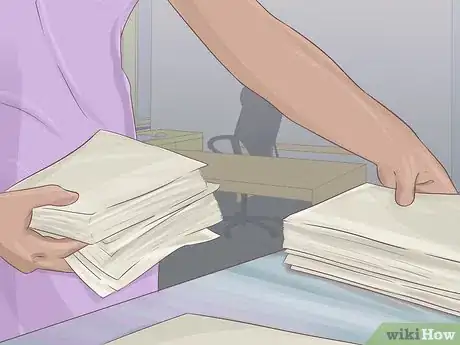




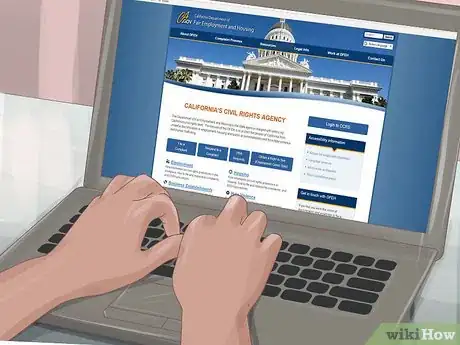




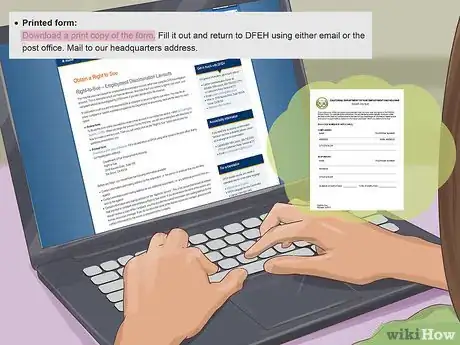


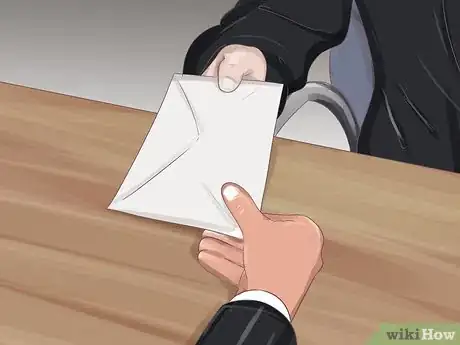
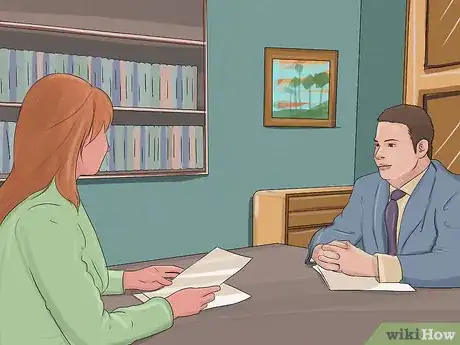

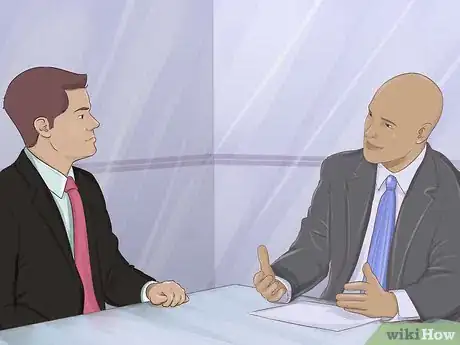







-Status-Step-6.webp)





